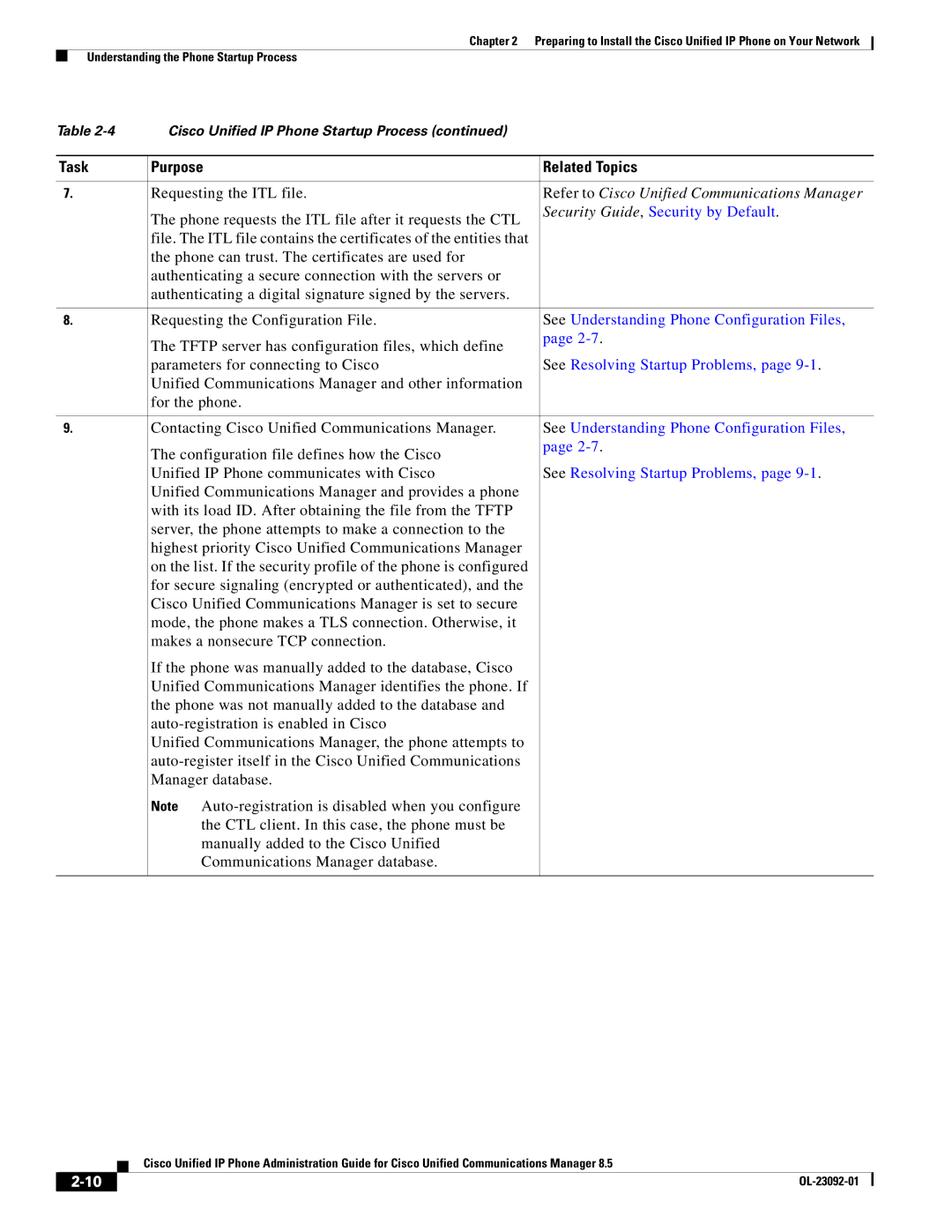
Chapter 2 Preparing to Install the Cisco Unified IP Phone on Your Network
Understanding the Phone Startup Process
Table | Cisco Unified IP Phone Startup Process (continued) |
|
|
|
|
Task | Purpose | Related Topics |
|
|
|
7. | Requesting the ITL file. | Refer to Cisco Unified Communications Manager |
| The phone requests the ITL file after it requests the CTL | Security Guide, Security by Default. |
|
| |
| file. The ITL file contains the certificates of the entities that |
|
| the phone can trust. The certificates are used for |
|
| authenticating a secure connection with the servers or |
|
| authenticating a digital signature signed by the servers. |
|
|
|
|
8. | Requesting the Configuration File. | See Understanding Phone Configuration Files, |
| The TFTP server has configuration files, which define | page |
|
| |
| parameters for connecting to Cisco | See Resolving Startup Problems, page |
| Unified Communications Manager and other information |
|
| for the phone. |
|
|
|
|
9. | Contacting Cisco Unified Communications Manager. | See Understanding Phone Configuration Files, |
| The configuration file defines how the Cisco | page |
|
| |
| Unified IP Phone communicates with Cisco | See Resolving Startup Problems, page |
| Unified Communications Manager and provides a phone |
|
| with its load ID. After obtaining the file from the TFTP |
|
| server, the phone attempts to make a connection to the |
|
| highest priority Cisco Unified Communications Manager |
|
| on the list. If the security profile of the phone is configured |
|
| for secure signaling (encrypted or authenticated), and the |
|
| Cisco Unified Communications Manager is set to secure |
|
| mode, the phone makes a TLS connection. Otherwise, it |
|
| makes a nonsecure TCP connection. |
|
| If the phone was manually added to the database, Cisco |
|
| Unified Communications Manager identifies the phone. If |
|
| the phone was not manually added to the database and |
|
|
| |
| Unified Communications Manager, the phone attempts to |
|
|
| |
| Manager database. |
|
| Note |
|
| the CTL client. In this case, the phone must be |
|
| manually added to the Cisco Unified |
|
| Communications Manager database. |
|
|
|
|
| Cisco Unified IP Phone Administration Guide for Cisco Unified Communications Manager 8.5 |
